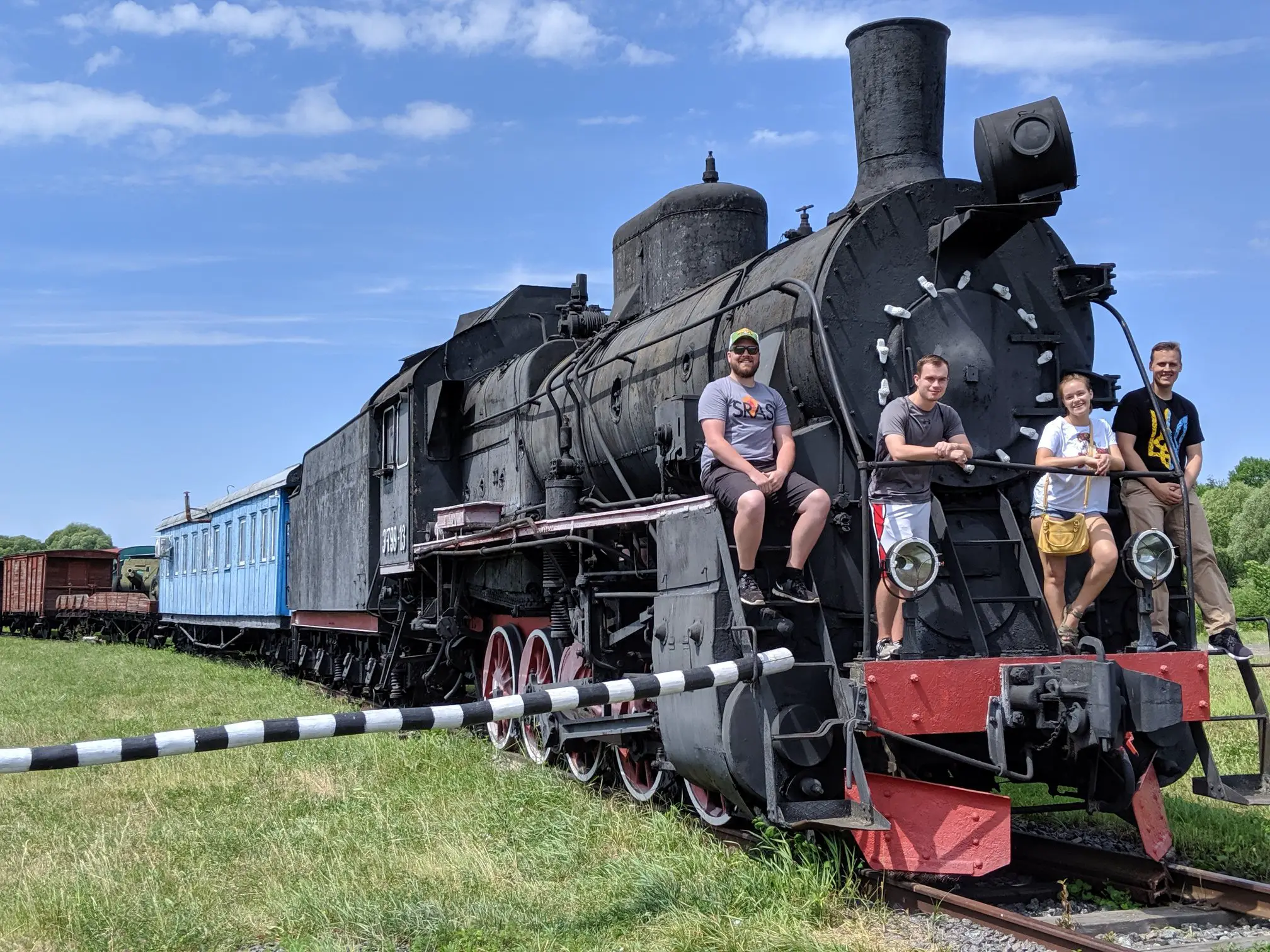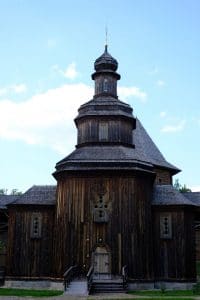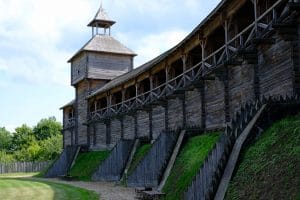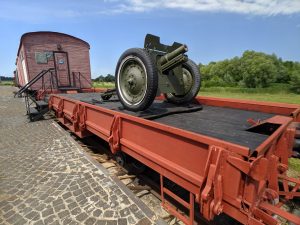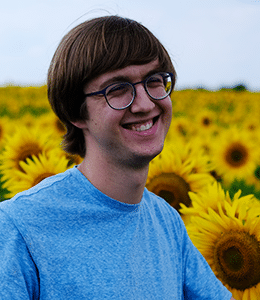The Ukrainian countryside rolled by outside the van window. Sunflower fields stretched as far as the eye could see, shot through with copses of trees and punctuated with corn and wheat fields. We were on an excursion several hours to the east of Kyiv, included in our Kyiv-based study program, to see three major Ukrainian landmarks: the site of the Battle of Kruty, and both the fortress and town of Baturyn. All three are of central importance to understanding the modern Ukrainian identity.
The Battle of Kruty Museum Reserve
The Battle of Kruty was fought in 1918. A group of 600 Ukrainian troops, many of them student volunteers and cadets, faced a contingent of about 6,000 Red Army soldiers, who marched on Kyiv to prevent its independence after the Revolution. The spot at present is set in the idyllic countryside and easy to miss. In 2006, after decades of official silence on the matter, a memorial was dedicated to the Ukrainian soldiers who fell in the battle. There is a railroad platform with two lines of train cars, a preserved steam train, and two small memorials.

In Kyiv, most people are bilingual and readily speak Russian or Ukrainian, but in the small towns outside Kyiv, many people prefer Ukrainian due to personal politics or unfamiliarity with Russian. The program had apparently been arranged without having taken for granted that museum staff would be bilingual. Our guide, a local who works for the museum, only spoke Ukrainian. However, although we had no interpreter, we could still glean an understanding from the texts and the bits of Ukrainian we can understand due to its similarities with Russian.
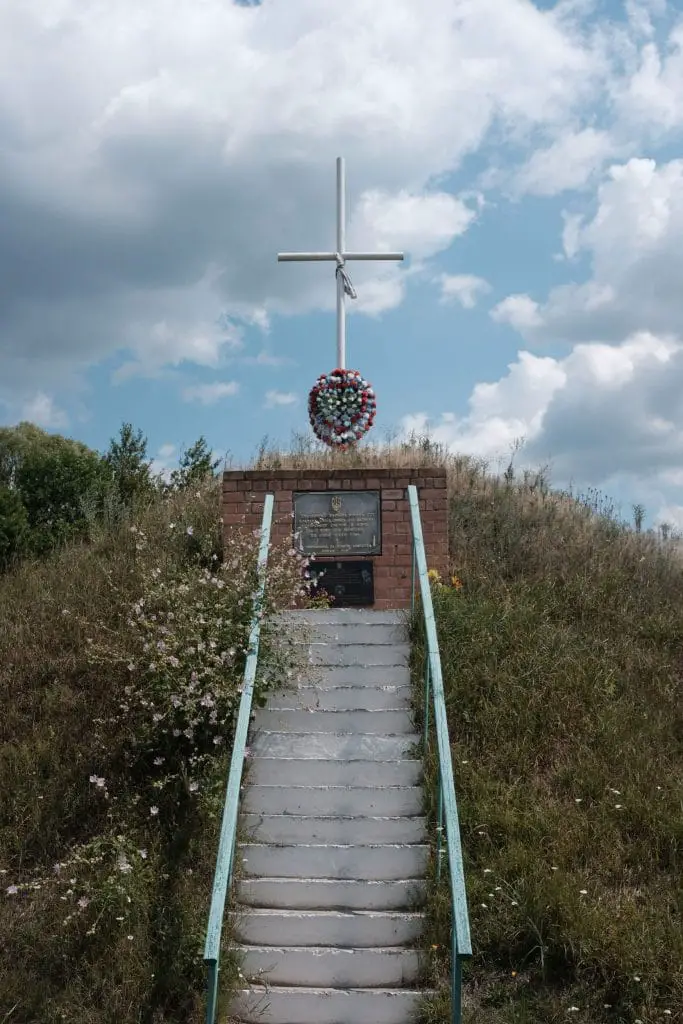
The guide led us into the first line of cars, which have been turned into small museums showing the uniforms the soldiers wore, the weapons they carried, the facilities they bathed in, and the letters they wrote. Other cars carry details of the political situation in the leadup to the battle, written, unfortunately, only in Ukrainian. A final car is devoted to the ongoing Donbass conflict, with information about the 2014 Euromaidan protests and the events that followed. Shells, rocket casings, helmets, and armor plating from the war lines shelves along the walls, which themselves are decorated with portraits of those who have perished. Dual crests bear both the Ukrainian flag and the black-and-red of the Ukrainian partisan forces, who fought both Nazi Germany and the Soviet Union during the Second World War, tying this final section of the museum, and the museum as a whole, to a theme of continued resistance.
Across the street from the train platform, two mounds bear dual monuments to the Battle of Kruty. A flagpole flies from the top of one mount, wreathed in flowers and bearing an inscription dedicated to the battle’s casualties. A smaller monument to the left is capped with a simple cross and a similar inscription, and serves as a place for prayer. After our tour, we were given some time to take in the profound silence of the area. I climbed to the top of the tallest mound and looked out across the plains.
Baturyn: Fortress and Town
From there, we travelled to the fortress of and town of Baturyn. The town of Baturyn served as the capital of the Cossack Hetmanate, first situated within a walled citadel bearing the same name as the town. In 1708, after the Cossacks switched allegiance to the Swedish side during the Great Northern War and began to promote an independent Ukraine, Russian forces sacked the town and slaughtered its inhabitants, leaving it and the citadel in ruins. In the 1750s, the Hetmanate resettled, moving the capital closer to the rest of the town and leaving the citadel in obscurity.
Restoration efforts have since been undertaken, and the reconstructed citadel features a section of a high timber wall, the Hetman’s (leader’s) residence, a wooden Orthodox cathedral, a well, and a storeroom. A local guide, speaking in practiced Russian, which we were all intensively studying in Kyiv, led us through the restored citadel, showing us the lifestyle of the Hetmanate and explaining the history of the town before the sacking. The residence has been reconstructed inside and out, and serves as a museum housing original documents and artifacts from the Cossack Hetmanate. Several decades later, when Hetman Kyrylo Rozumovskyi rebuilt the town, he constructed a lavish residence in Baroque styling.
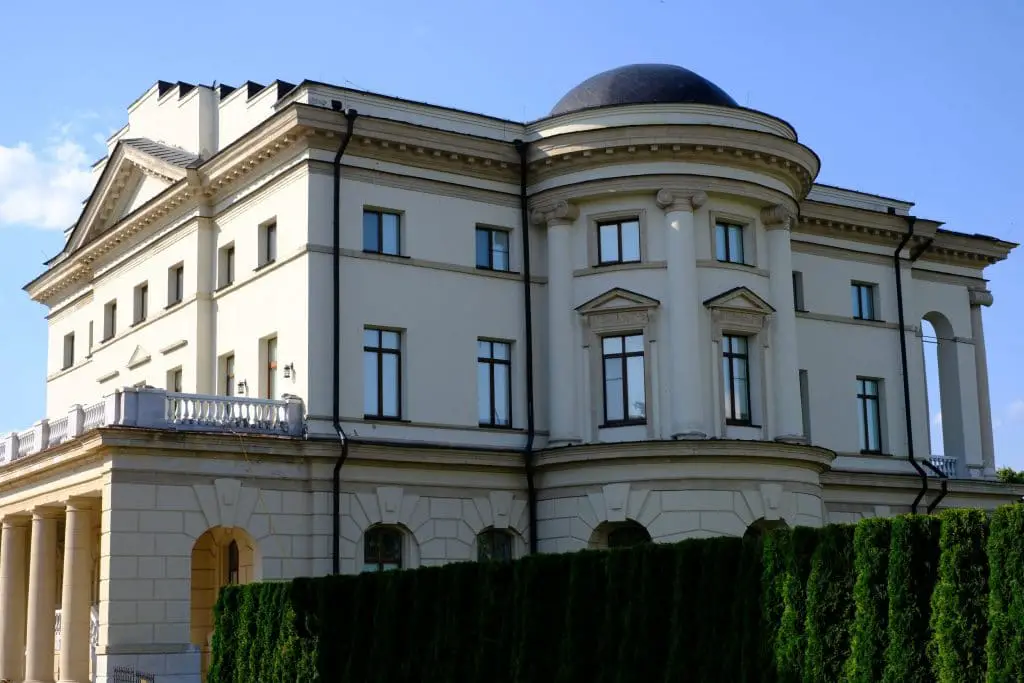
We reached the town after another brief drive through the countryside, and it was something of a shock to go from dirt roads to immaculately kept gardens surrounded by high, intricate metal fences. The estate fell into disrepair after the death of Razumovsky in 1803, and while several efforts to restore it were undertaken, the turmoil of the 20th century prevented any from being fully successful. In 2008, a final round of restoration succeeded in restoring the palace to its original state, filling it with Ukrainian art and historical artifacts from the Hetmanate, including the priceless broadsword of Kiril Razumovsky. Though Baturyn has still not fully recovered from the sacking of 1708, it survives as a town of several thousand and a popular choice for local tourists. Currently, as well as being a museum, the palace serves as a cultural center, hosting concerts and other events.
Our excursion was a valuable educational experience. Despite the fact that much of the information was available only in Ukrainian, I nevertheless managed to pick up on most of the key details. The Battle of Kruty may seem disconnected with the sacking and restoration of the Cossack Hetmanate, but both these events, despite a nearly two hundred year temporal separation, are developed to support the official post-Maidan Ukrainian national identity – with a heavy emphasis on independence and conflict with Russia. Many Ukrainians today identify strongly with the ongoing struggle against Russian aggression, and both the Kruty museum and the museums in present this as an age-old concept. This is vital to understanding current Ukrainian feelings towards Russia. On a deeper level, all three museums have a clear agenda.


